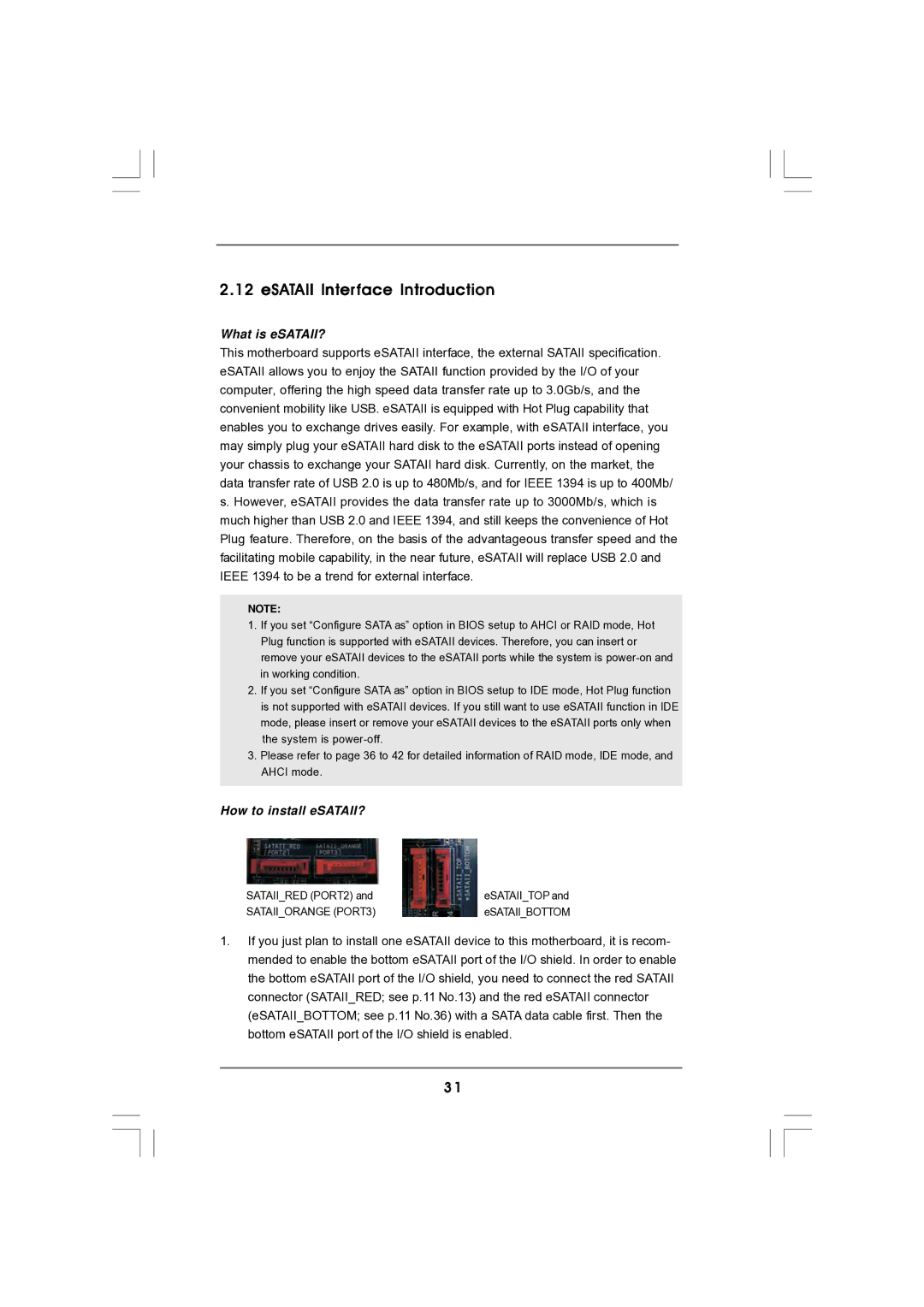
2.12 eSATAII Interface Introduction
What is eSATAII?
This motherboard supports eSATAII interface, the external SATAII specification. eSATAII allows you to enjoy the SATAII function provided by the I/O of your computer, offering the high speed data transfer rate up to 3.0Gb/s, and the convenient mobility like USB. eSATAII is equipped with Hot Plug capability that enables you to exchange drives easily. For example, with eSATAII interface, you may simply plug your eSATAII hard disk to the eSATAII ports instead of opening your chassis to exchange your SATAII hard disk. Currently, on the market, the data transfer rate of USB 2.0 is up to 480Mb/s, and for IEEE 1394 is up to 400Mb/ s. However, eSATAII provides the data transfer rate up to 3000Mb/s, which is much higher than USB 2.0 and IEEE 1394, and still keeps the convenience of Hot Plug feature. Therefore, on the basis of the advantageous transfer speed and the facilitating mobile capability, in the near future, eSATAII will replace USB 2.0 and IEEE 1394 to be a trend for external interface.
NOTE:
1.If you set “Configure SATA as” option in BIOS setup to AHCI or RAID mode, Hot Plug function is supported with eSATAII devices. Therefore, you can insert or remove your eSATAII devices to the eSATAII ports while the system is
2.If you set “Configure SATA as” option in BIOS setup to IDE mode, Hot Plug function is not supported with eSATAII devices. If you still want to use eSATAII function in IDE mode, please insert or remove your eSATAII devices to the eSATAII ports only when the system is
3.Please refer to page 36 to 42 for detailed information of RAID mode, IDE mode, and AHCI mode.
How to install eSATAII?
SATAII_RED (PORT2) and | eSATAII_TOP and |
SATAII_ORANGE (PORT3) | eSATAII_BOTTOM |
1.If you just plan to install one eSATAII device to this motherboard, it is recom- mended to enable the bottom eSATAII port of the I/O shield. In order to enable the bottom eSATAII port of the I/O shield, you need to connect the red SATAII connector (SATAII_RED; see p.11 No.13) and the red eSATAII connector (eSATAII_BOTTOM; see p.11 No.36) with a SATA data cable first. Then the bottom eSATAII port of the I/O shield is enabled.
3 1
